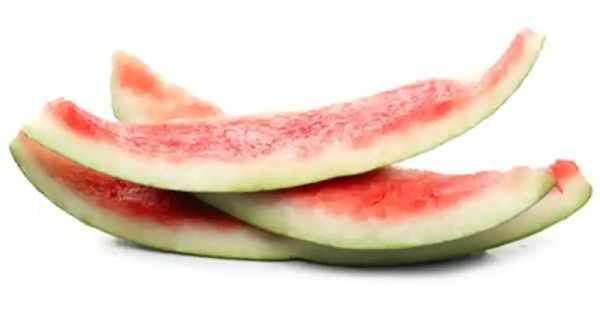Watermelon is a delightful summer fruit that we all love, but did you know that the peel can be just as useful as the juicy flesh? Instead of throwing away the watermelon peels, there are plenty of creative ways to repurpose them in your kitchen and garden. Not only does this help reduce waste, but it also adds a sustainable touch to your lifestyle. In this article, we’ll explore some amazing ideas for reusing watermelon peels, unlocking their hidden potential.
In the Kitchen: Delicious Recipes with Watermelon Peels
Watermelon peels are not only edible but also packed with fiber and antioxidants. They can be transformed into delicious and nutritious dishes. Here are a few culinary uses for watermelon peels:
-
Watermelon Peel Jam: Turn those peels into a sweet and tangy jam that goes perfectly with breakfast or pastries. It’s simple to make and incredibly tasty. Here’s how:
-
Ingredients:
- 1 kg watermelon rind (white part only)
- 4 cups granulated sugar (750-800 grams)
- 3 cups watermelon peel juice (from boiling the rinds)
- 5-6 cloves (optional, for flavor)
- Juice of ½ lemon
- ½ tablespoon butter
-
Instructions:
- Wash the watermelon thoroughly and remove the green skin to reveal the white part.
- Chop the white rind into small cubes.
- Boil the rind in water for about 15-20 minutes until softened. Keep the cooking water.
- In a large pot, mix the watermelon rind with sugar, watermelon peel juice, and cloves. Bring it to a boil.
- Simmer the mixture for about 1 hour, stirring occasionally until it thickens.
- Add lemon juice and butter towards the end for a beautiful shine and balanced sweetness.
- Allow it to cool and store in sterilized jars. Enjoy the jam with toast or as a dessert sauce.
-
-
Watermelon Peel Pickles: Add a tangy twist to your meals with these crunchy watermelon peel pickles. They make a great side dish or snack. Here’s what you’ll need:
-
Ingredients:
- Watermelon peels (white part only)
- 1 cup apple cider vinegar
- ½ cup sugar
- 1 tablespoon salt
- 1 teaspoon mustard seeds
- 1 teaspoon peppercorns
- 1 clove garlic
- Water
-
Instructions:
- Remove the green skin from the watermelon peels and cut the white part into strips.
- In a pot, combine vinegar, sugar, salt, mustard seeds, peppercorns, and garlic. Bring to a boil.
- Add the watermelon peels and boil for 5 minutes.
- Let them cool, then transfer to jars and refrigerate. Enjoy your homemade pickles after a few days. They will last for weeks in the fridge.
-
-
Watermelon Peel Stir-fry: For a savory dish, stir-fry watermelon peels with other vegetables. Their neutral flavor absorbs spices and sauces beautifully, making them a versatile ingredient. Here’s what you’ll need:
-
Ingredients:
- Watermelon peel (white part only, thinly sliced)
- 1 onion, sliced
- 1 clove garlic, minced
- 1 bell pepper, sliced
- Soy sauce, to taste
- Olive oil
- Salt and pepper, to taste
-
Instructions:
- Heat olive oil in a pan and sauté the garlic and onions until softened.
- Add the sliced watermelon peels and bell pepper, stirring occasionally.
- Add soy sauce, salt, and pepper. Cook for about 10 minutes until the peels are tender with a bit of crunch.
- Serve as a side dish or over rice for a delicious and unique meal.
-
In the Garden: Sustainable Uses for Watermelon Peels
Watermelon peels have more to offer than just culinary benefits. They can be an eco-friendly resource for your garden. Here are some ideas:
-
Composting Watermelon Peels: Adding watermelon peels to your compost pile is a fantastic way to enrich the soil. The high nitrogen content helps balance carbon-heavy materials like leaves and straw. Chop the peels into small pieces before adding them to your compost bin or heap. The water content in the peels aids in breaking down other compost materials faster, creating nutrient-rich compost for your plants. Just remember to mix them well with other compost ingredients to prevent pests or excessive moisture.
-
Watermelon Peel Mulch: Watermelon peels can also be used as mulch around plants that require extra moisture, such as cucumbers or melons. By placing the peels around the base of the plants, you can help retain moisture in the soil and suppress weed growth. Over time, the peels will break down, enriching the soil with nutrients.
-
Natural Fertilizer: The water leftover from boiling watermelon peels can be used as a natural fertilizer for your plants. This nutrient-rich liquid provides additional minerals that can boost plant growth. Dilute the watermelon peel water in a 1:2 ratio with fresh water before using it in the garden.
-
Watermelon Peel as a Pest Repellent: Believe it or not, watermelon peels can act as a natural pest deterrent. Place small pieces of the peels around your garden to attract ants and aphids away from your plants. Once they gather on the peels, you can easily remove them and dispose of them away from your garden.
Conclusion
Don’t let watermelon peels go to waste! With these creative ideas, you can transform them into something beneficial for both your kitchen and garden. From delicious jams and pickles to enriching your soil and repelling pests naturally, watermelon peels have fantastic reusability potential. So, the next time you enjoy a juicy watermelon, think twice before discarding the peels and discover how they can bring additional joy to your home and garden!





